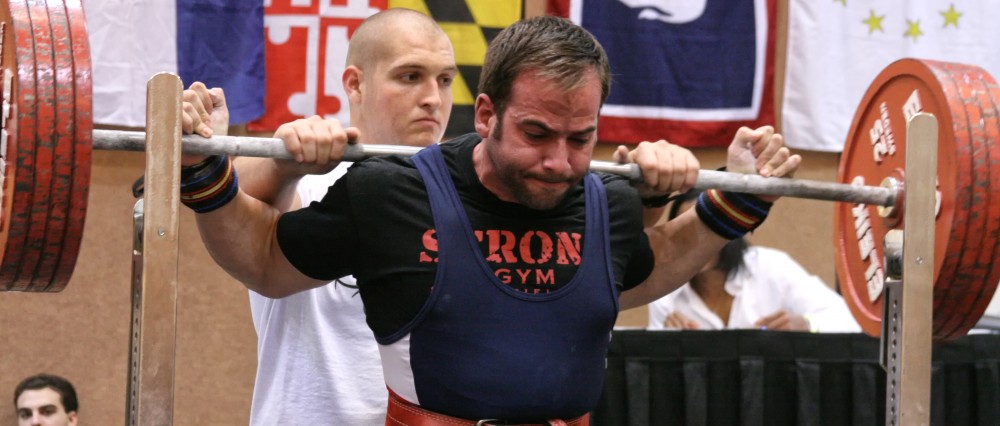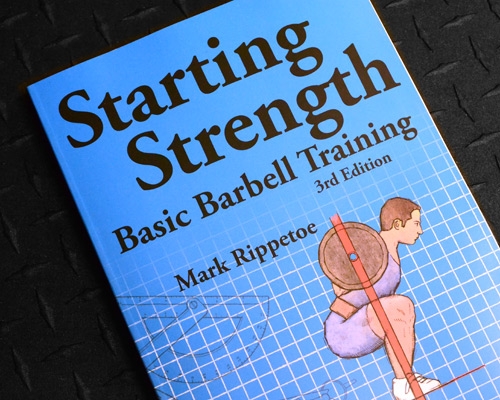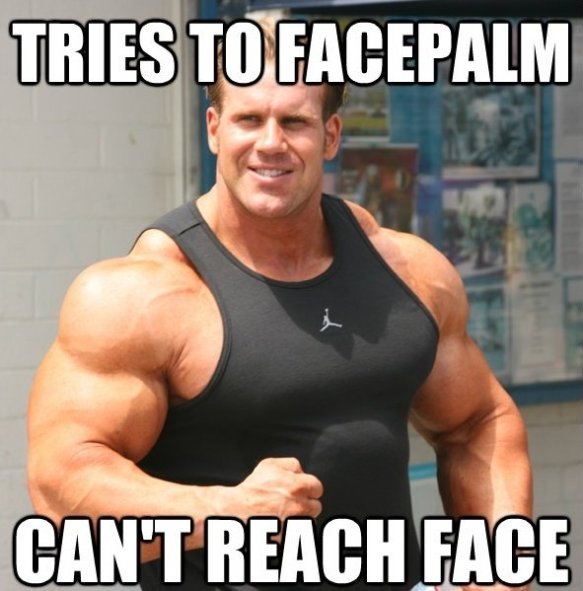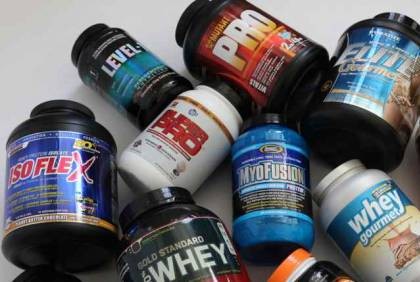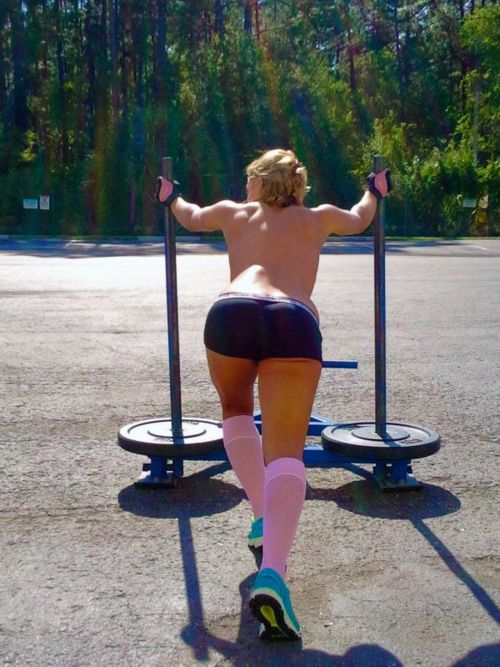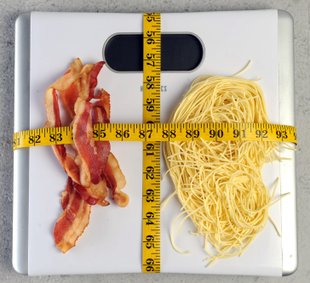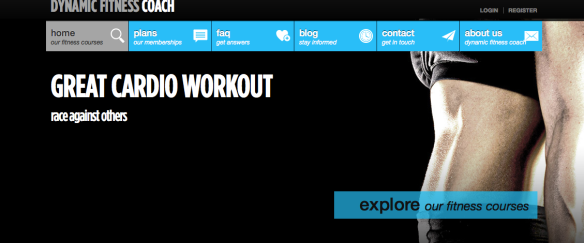By Jordan Feigenbaum MS, Starting Strength Staff, CSCS, USAW CC, HFS
________________________________________________________________________
In general, articles on the Internet tend to come in three different flavors: a) chock full of useful information and analysis from a scientific viewpoint by a subject matter expert (self proclaimed or not), b) entertainment-based musings, or c) a blatant hatchet job written for the sole purpose of denigrating someone who’s well known in order to get your readership up. The article we’ll be discussing today falls into the latter category and both the author and publisher over at Juggernaut knew full well what they were doing. In response, I’ll appropriately be combing through this illiterate ignoramus’s article for the entire Internet to see in order to show just how bad it really is, why JTS should have higher standards for publishing, and how to present a counter analysis to another person’s viewpoint.
At this time, Mr. Mash has not responded to my email requesting his agreement to let the article be posted on StartingStrength.com for everyone to view. Additionally, I added if he’d like to discuss the article on the Internet or at our annual Starting Strength Coaches Conference he’s welcome to do so. We’re sincerely hoping Mr. Mash will regale us with his elite analysis of barbell training.
Since I do not own the article I cannot post it here in its entirety, but one of the joys of the Internet is the ability to see deleted pages through cache and I will link to a screenshot of the now-defunct page often as we take this journey through ad-hominem attacks, misinformation, and illogical arguments.
After a lot of self promotion and assertion that Mr. Mash is, indeed, a subject matter expert in the strength and conditioning world we arrive here:
“This long introduction is to explain why I cannot tolerate bogus information. My life is spent informing and helping people, so when I see someone giving out advice that is not only wrong but dangerous, it makes me furious.”
Just to be clear, we’re looking for why the subsequently argued viewpoints are safer and more correct.
“Mark Rippetoe is one such guy. Until recently I had never heard of Coach Rippetoe even though he is a self-proclaimed power-lifter and strength coach. “
So if you’ve competed in the sport of powerlifting at 40+ meets and been a gym-owner and coach for 35 years I think it’s safe to assume you’re not just a “self-proclaimed” powerlifter (1 word Mr. Mash, you elite typist you) or coach, rather actually are.
Also interesting that you say you’ve never heard of him until recently, yet you say in a comment (pic below) that “His book “Starting Strength is awesome.” Interesting.
“His popularity surged from Crossfit HQ between the years 2006-2009 teaching basic barbell movements. (HQ really needs to be careful who they choose to represent their brand, but that is a topic for another article).
Below is a video of the way the Coach Rippetoe teaches the squat:
And here is a video that is correctly how to teach a squat:
In video 1 you have Rippetoe coaching a novice how to fix their hip drive, depth issues, and other technique issues as they present themselves throughout warm up sets with a lifter in REAL-TIME. There was no staging for this, as it was not a demo on squat technique nor was it a video on “how to teach the squat”, rather it was merely a “how to fix the hip-drive” during the execution of the low bar back squat. If we go through Mr. Mash’s video, we can get some real “pearls” of information:
At 0:18 Mr. Mash says this is how “true champions” squat, although I think Dan Green, Kirk Karwowski, Ed Coan, and Andrey Malanachiev would disagree with this depiction since none of them do the high bar back squat like Mash would insinuate.
From 0:31- 1:10 Mr. Mash insinuates that you “lead with your chest” out of the bottom, although I’m sure he understands that this is merely a cue for a lifter and not what is happening biomechanically, i.e. it is the hamstrings and gluteal muscles that are starting to extend the hip while the quadriceps muscles are extending the knee anteriorly to start the concentric portion of the squat. He continues to say that “you put yourself in a better biomechanical position”, though he does not say compared to what nor does he propose a mechanism or rationalization for how this occurs. We can assume that he means a better biomechanical position compared to a low bar back squat, but then we need Mr. Mash to tell us just exactly what he means, i.e. what joints are now in a more advantageous position for the relevant muscles crossing them to fire, how does this lead to increased loading (to get stronger) than the low bar back squat, and how does this lead to a better training effect. Then he continues to say that “If you’re doing the Olympic lifts, the snatch and the clean and jerk, you always want to keep a vertical spine and you only want to have a horizontal back angle during the pull.” Let’s take a look at Dolega’s would-be WR snatch (in training) and note the back angle change out of the recovery.
Let’s pause a second here. While it is increasingly important to keep a vertical torso when recovering from a clean so as not to let the barbell deviate too far forward of the midfoot, which would create an unnecessary moment arm between the weight and the lifter’s center of mass, this is definitively not the case for the recovery from the snatch. When you watch really heavy snatches being recovered from. Notice that we just saw “hip drive” and thus, a more horizontal back angle in a snatch recovery from a “true champion”. Could this be because it’s the most effective way to drive up (extend the hips) out of the bottom in the concentric portion of the squat? Notice also that I’m defining any ambiguity in my terminology so that people can fully understand my argument and position on the matter. Mr. Mash does not do this.
At 1:15, Mr. Mash starts to “teach” the low bar squat. Mr. Mash then cues his lifter to go “back, back, back, back”, to which the lifter properly ignores so his knees can travel forward enough to optimize tension on the quadriceps in addition to engaging the posterior chain to a high degree. Then Mr. Mash cues the lifter to come up out of the bottom and incorrectly states that “See, you lift your chest first” after his lifter actually used his hips to come out of the bottom, which will happen 100% of the time in a heavy squat that’s to depth regardless of what your “guru” tells you.
At 1:45 Mr. Mash says “If you bring your chest first it brings you to almost lock out anyway.” However, what we actually see in video analysis of lifters is that the bar speed craters when the chest gets lifted on the way up when the muscles of the hips (gluteal group, hamstrings, adductors, etc.) could still be actively contributing to hip extension. Lifting the chest or as Louie puts it “shove your hips forward out of the bottom slacks the hamstrings and causes force production to drop. I have seen many reps missed this way and this “phenomenon” has been corroborated by other coaches who know how to analyze a lift. For a rather dramatic example, see Scott Cartright’s Squat where he tries to “lift the chest and shoves his hips forward out of the bottom” (but he actually drives his hips upward) vs. Andrey Malanachiev’s squat. Which one is to better depth? Which one had better bar speed?
From about 1:50-2:00 Mr. Mash is almost incomprehensible as he talks in sentence fragments and does not really make a clear point except for telling us to watch a 2 year old squat because, children and that you shouldn’t lead up with the hips first then the chest, rather it should be one motion. Ironically, THIS IS HOW WE TEACH THE SQUAT AT ALL OUR SEMINARS, which we’ve been doing for years. Strange.
Then it’s time for some Johnnie Candito action, just for good measure because
“Here is another coach agreeing with me”
The focus for the video, as we find out at 0:16 is “Proper hip drive in the squat”. Notice that Candito uses Mark Rippetoe’s name in his video title so that he can get more views because, ya know, Rip actually has a pretty decent following and all. Mr. Candito has unfortunately disabled comments for this video as he was getting called out left and right for all of his misgivings, which we’ll address in order:
At 0:45 Mr. Candito posits that “Mark Rippetoe teaches the hip drive as driving back the hips” out of the bottom of the squat. He continues,
“Here is the problem that is not using your hips at all. What is really happening is knee extension.”
So first things first, we do not teach the hip drive as “driving back the hips” or moving the hips posteriorly out of the bottom of the squat and if Mr. Candito would have read the book by the person he’s trying to use to get views, he’d know this. Additionally, even if someone did move the hips backwards significantly out of the bottom of the squat on their way up, it is virtually impossible to move the hips and the rest of the attached lower limb posteriorly without also moving the damn things upwards, i.e. hip extension during the concentric portion of the squat. Knee extension in absence of hip extension from the bottom of the squat with any significant load is impossible, as the lifter would simply knock themselves over on their ass from the knee extension creating a moment arm between the barbell and the middle of the foot (with the barbell being behind the middle of the foot).
From 0:54-1:10 Mr. Candito regales us with how he likes to teach the squat. He wants you to
initiate the squat by flexing the knee, then actively using your hip flexors on the way down to pull yourself into the bottom of the squat.
During the whole time of course, you should be actively flexing your glutes to “gradually sink back into the squat”. While I’m not sure what in the actual hell “gradually sink back into the squat” means, the preceding anatomy and biomechanics is complete and utter gibberish stemming from ignorance on the relevant topic. The hip flexors do not actively contract in order to flex the hip during the eccentric portion of the squat, just as the lats don’t actively contract in order to bring the bar back down from the press (overhead for the uninitiated). Gravity does a fine job at bringing things down and the only thing these muscles that are shortening do is relax in order to allow the movement to proceed. The only accurate thing mentioned here is the “flexing” of the glutes, as this eccentric braking resists “dive-bombing” the descent and getting out of position.
Next, Mr. Candito continues
“but this is not just simply bending forward, there is a difference between leaning forward and actually using your hip flexors and extensors.”
It’s hard to discern just what exactly Johnny is talking about, but this is nonsense. You lean forward, i.e. your back angle becomes more horizontal relative to the floor, during any variation of squat as the hips and the knees flex. How horizontal your back becomes is dependent on the bar position and segment length of the individual lifter. In the high bar position, the back angle will be more vertical compared to the low bar squat. If we consider the low bar back squat in an individual with a long torso, i.e. a long segment length between the SI joint and the barbell, he or she will have a more vertical torso than a person with a short torso. In any event, none of these squats will have occurred by the “hip flexors actively pulling the lifter downwards”, rather gravity will do that just fine. Similarly, the barbell will stay directly vertical to the middle of the foot and the intervening body segments, i.e. the torso and the femur, will accommodate any number of various configurations to make sure this happens. So what’s the take home? Forward lean is a function of segment length and bar position, the hip flexors don’t pull you down, and Johnny Candito should make less YouTube videos in his school library.
Next (at 1:22), it’s video time with Mr. Candito as he attempts to show us correct utilization of the hips. Mr. Candito says
“By using my hips properly I’m able to sit back, be explosive, while keeping my chest up.”
When watching his video, you can see that Mr. Candito has chosen to use a high bar variation of the squat, which is interesting because he’s claiming to want to show us how to drive the hips properly and hip drive is suboptimal in this variation due to slacking of the hamstrings relative to the low bar version. You’ll also notice, if you click through the video demonstration of his rep, that his hips do indeed move back as they start to go up out of the bottom. He actually writes “notice the knees are stagnate out of the bottom” when they are a) extending and b) moving posteriorly out of the hole. His chest also falls as he drives his hips because he didn’t keep his back locked in place well enough. So in effect, he’s doing exactly the opposite of all the things he told you that you shouldn’t do. Some of which are a misunderstanding of both the Starting Strength model of the squat and some are just form faults.
At 1:52, Mr. Candito says
“You might have noticed that my hips do not thrust forward immediately out of the hole. This is because your quads inevitably will be active throughout the entire movement. So mentally you need to counteract by thrusting the hips forward to remain in a neutral position.”
Typical gibberish. None of this makes sense except for the quads are active throughout the entire movement, which is correct in that they eccentrically lengthen during the descent and they concentrically shorten during the ascent.
At 2:29, Mr. Candito shows a clip of Rip coaching the low bar back squat (LBBS) to a novice lifter, which is the same video Mr. Mash referenced in the beginning of the article. Does the lifter shift his hips posteriorly out of the bottom in this video? Yes he does, as this was done when trying to coach a novice lifter who was not previously using the stretch-shortening cycle during his squat. Sometimes when you coach people, you have to get them to exaggerate the new behavior you’re wanting them to do in order to get the correction you want. This is not what we teach at the Starting Strength Seminars or in the book. We want the hips to drive straight up out of the bottom, as any other movement anterior or posterior is less efficient. Mr. Candito has not read the book, asked a question on the forum, or come to a seminar where he would learn he is mistaken. Rather, he is just running his mouth on the Internet because he can. Then we get a clip of Johnny squatting 500 about an inch high with really terrible hip drive. The hip drive is lost because he is high and he’s not thinking “hips up”.
The rest of the video is Mr. Candito stammering over his misinterpretation of the mechanics involved in the squat, what is actually happening anatomically and biomechanically, and in general, making himself look foolish. The hips do not go forward-optimally out of the bottom of the squat. Rather they go up via hip extension. If you look at heavy squats (including Cartwright who is trying to go “hips forward” out of the bottom) they will ALL come out of the bottom with a hip drive upwards. If you consciously cue “hips forward” after the initial hip drive, the bar speed slows markedly and this can be seen in video analysis of lifters who do this. On the other hand, if you “stay in your hips” (as in you do not exaggerate lifting the chest) all the way up the bar speed is better indicating increased force production and better mechanics.
Anyway, let’s move back to Mr. Mash now. He continues with:
“The problem with Rippetoe’s approach is that he is considering the hamstrings only, which is becoming a big problem in sports medicine in America.”
How in the world could one reasonably come to this conclusion when Rip spends pages talking about why we choose the stance we do in the squat, deadlift and powerclean, i.e. for more external rotator and adductor musculature to be used. Also, how are hamstrings only becoming a big problem in sports medicine in America? A quick review of relevant medical literature sources came up empty for “Subject matter expert only considers the hamstrings.” Maybe my search criteria was wrong or maybe Mr. Mash hasn’t yet defined his argument to anything intelligible. Here’s hoping he gets it together in a few paragraphs. Then, this useless nugget comes in:
“In contrast, Gray Cook, the best Physical Therapist, is changing all of that. Gray teaches movement and how muscles work synergistically. “
Synergy in the musculoskeletal system can be defined as the interaction of multiple muscles together to produce an effect greater than the sum of their individual effects. An example would be to use the low bar back squat with proper hip drive so you can use your hamstrings to a greater degree, whose force production will be added to the force created by the glutes, adductors, etc. Wow, this sounds almost exactly like what we teach at our seminars and what is written in the book that Travis claims is “awesome.”
Mr. Mash continues to provide us with other gems in his article:
“If you want to know how to squat properly, look at a two year old. They sit their butts between their ankles, maintain a vertical back, and they will not lift the butt or hips first.”
This is what’s classically known as an informal fallacy in that the structure of the argument is fine, but the conclusion is bogus. Is Mr. Mash really contending that the most optimal way to squat is the way in which a 2 year old squats? What does he consider optimal? We contend that the most optimal squat is the one that results in training the most amount of muscle mass, uses the most effective range of motion, and results in the highest force production and can subsequently be loaded the heaviest. Mr. Mash’s assertion that the way a 2 year old squats, which he defines as having the “butt between their ankles with a vertical back” results in decreased muscle mass usage, as at this depth the hamstrings are slacked to a much greater degree and cannot contribute to hip extension as effectively and thus, do not receive as potent a training effect. Moreover, because this style of squatting, i.e. ATG “2 year old style”, would undoubtedly lead to less weight on the bar, less force production can be trained and less strength-which is a general adaptation that can apply widely- will be accrued. The counter argument that is sometimes made to this when we go down this rabbit hole is why not use quarter squats then, as you can load them far heavier than a to-depth squat of any variety. We cannot forget about our first criteria for the most optimal form of each exercise, which is to train the most amount of muscle mass possible. A quarter, half, or other partial exercises result in decreased training of the hamstrings and glutes, which has been routinely demonstrated in published scientific literature.
So, Mr. Mash’s initial argument is bogus to begin with and just when you think it couldn’t get any worse:
“Not to mention we all learned in intro level Geometry that two levers are better than one, and Rippetoe teaches to shift all loads onto the hip lever. “
How exactly are two levers better than one and how did Mr. Mash come to the conclusion that Rip and Co. teaches the squat in such a way that “shifts all the loads onto the hip lever”?* If Mr. Mash had read the book, Starting Strength: Basic Barbell Training 3rd Edition, he would realize that his statements have no basis in reality. We properly define the levers as they apply to the trunk and lower limb as follows:
-The “trunk” lever- The horizontal distance between the barbell and the hip joint.
-The proximal femur lever- The horizontal distance between where the barbell bisects the femur and the hip joint
-The distal femur lever- The horizontal distance between where the barbell bisects the femur and the knee joint.
All these levers are defined and described in great detail in the book and Mr. Mash is incorrectly coming to the conclusion that because Rip talks about hip drive that he wants no distal femur lever arm and a maximal proximal femur lever. In actuality, these values are pretty much set in stone depending on the length of your femur, trunk, and where you place the bar. The argument that we make is that in the low bar back squat, the proximal femur lever is longer than it would be in the high bar back squat because IT IS. We further argue that we desire this long-er lever arm because the hip joint has more available musculature and soft tissue surrounding it so that it can both absorb the higher force values AND create more force during the concentric portion of the squat. In sum, we seek a long proximal femur lever by choosing the low bar back squat so that more of the stress is absorbed by the hips, which can create more force anyway. We do not actively seek the elimination of the distal femur lever and this does not occur in the version of the squat we teach anyway even with people of weird limb lengths.
In a high bar back squat, the proximal femur lever gets shorter (less force on the hips) and the distal femur lever gets longer (more force on the knees). Since there is a reduced moment arm acting about the proximal femur lever, the muscles acting on the hip cannot generate as much force and less weight is lifted. Concomitantly, the high bar squat also produces increased forces and shear on the knee, which may or may not be a training consideration to make when programming for your stable of lifters.
As for your silly assertion that “two levers are better than one”:
Archimedes said :“Give me a place to stand and a lever long enough, and I shall move the world”, which refers to one lever. He’s probably a “rookie” too, right?
*Bonus points if you think Mr. Mash could correctly define the hip lever.
Next, Mr. Mash attempts to gain credibility by listing high level powerlifters who “know that the technique that Coach Rippetoe teaches is the very technique that we all avoid.” Let’s see who he lists:
“I have watched videos of all the great squatters in history: Ed Coan, Steve Goggins, Dan Green, Chad Wesley Smith, Shane Hammons, and Kirk Karwoski. “
Besides misspelling Shane Hamman’s name, does Mr. Mash realize that all of these lifters use the low bar back squat with hip drive? You know, the exact same technique that Rippetoe coaches and writes about? Does he know that Shane Hamman (fixed that one for ya’ rookie), Kirk Karwoski, and Ed Coan all have interviews on the Starting Strength site- seemingly lending credibility to idea that they agree with the technique advocated on the site.* Rip has even stated publicly that Dan Green’s squat is right in line with the hip drive he teaches, even if it’s not consciously done:
“No one ever said they were consciously thinking about driving their hips up. I’m sure that most of them are not. But they’re doing it anyway, because that’s how you get out of the bottom, and the longer you stay in the hip drive the more powerful the squat. My point is that they should be thinking about it, and that when you do you squat more efficiently. “
*This is me providing an informal fallacy of sorts, though it might actually be true as I haven’t asked them yet.
I’m not so sure that Mr. Mash’s assertion that the following is true at all:
“All great squatters know that the technique that Coach Rippetoe teaches is the very technique that we all avoid. “
Seems to me like they all use it whether they know it or not. A really poorly written article always needs some chest thumping and ad hominem attacks to keep readers interested and Mr. Mash did not disappoint:
“ I know all of these people, and I have talked squat with the best in the business. I have squatted 805lbs raw, 900lbs single ply, and 970lbs multi-ply and all at 220lbs.”
“ The position that he [Rippetoe] preaches is what we all call the “point of no return”, or where we are about to get crushed. At first I couldn’t believe that a power-lifter would preach this form, until I looked up his best numbers: Coach Rippetoe only squatted 611 lbs in a single ply squat suit at 220lbs. Rippetoe just doesn’t know any better. Rookie.”
Travis is a strong dude, no doubt about it. But how is it that having a better squat entitles someone to a better mechanical analysis, which is very cerebral in nature? While I’ll agree that a coach should have a good background in training him or herself, the degree to which these two coaches (Mash and Rippetoe) differ are not due to different “squat mechanics”. Rather the difference seen here, which is often under appreciated in people coaching high level athletes, is that some people are just very blessed in their ability to respond to a training stimulus. I could of course, opine about how Rip’s 611 was in a single ply squat suit from the 80’s which would pass for a singlet in comparison to modern-era equipment, but that’s not the point of showcasing how silly Mr. Mash’s belief is here.
He’s trying to make the case that because he “knows all of these people” and “has squatted 805 raw, 900lbs single ply”, etc. that his evaluation of the mechanics in the musculoskeletal system are better than someone else’s. I’d posit that a person with a PhD in kinesiology or biomechanics could easily analyze the barbell lifts and come up with a very sound analysis even if they have never trained. When you take a good chunk of training and coaching and put that on top of a knowledge base involving physics and human anatomy well, the analysis goes a lot smoother and additional insights will be made even if you never squatted 900. And let’s be real for a split second, while the gap between 611 and 900 is certainly vast, we’re still talking about the top 0.5% of human strength here, which is to say it really doesn’t matter if you squat 300lbs more provided you have actually trained your squat in the first place.
Let’s gear up for a couple more illogical arguments:
“I would like to coach Rippetoe myself, I could teach him how to have a decent squat.
You don’t have to have an elite squat to teach, but if you are going to be the self-proclaimed guru of the squat, then you need to be legit at least, not a rookie. (HQ should have checked him out first.) “
Let’s have a long hard look at this second sentence, shall we? Mr. Mash seems to contradict his earlier sentiments where he denigrated Rip’s 611 squat with the intent to assert himself as the subject matter expert, but then he turns around and says you don’t have to have an elite squat to teach- as long as you’re legit. So, I’m not sure exactly what “legit” is being defined as other than the fact that it’s not necessarily “elite”. I also don’t know how you can call a guy who has been doing this for 35+ years a “rookie”, but that seems to be his go to insult. Let’s see what other useful analysis Mr. Mash can provide:
“Even more infuriating is that this rookie is charging $600 per person to teach them how to squat incorrectly. Hey Crossfit community, stop giving your money to a phony rookie. “
If you’re going to try to bash someone, at least do it correctly. We’re currently charging 795-895 per slot at the seminar. See, if you only charge $125 like Mash does for his Learn to Lift Seminars you just know the info is bogus, right?* CrossFit charges $1000 a head for their weekend seminar where you don’t learn any technical analysis of the lifts, legitimate nutrition or programming information. On the other hand, you do get to see lots of Lululemon and do snatches with a PVC pipe so maybe that’s the real draw.
*Another illogical fallacy. Just keeping you guys awake here. Don’t worry we’re almost through so you can repost this 🙂
Moving along, Mash goes on to say:
“I know a lot of people are going to be upset about the harshness of this article, but this has to be said. If you are going to a seminar, watch some videos of professionals performing the movements. Then if the person teaching the seminar is teaching something completely opposite, leave the room immediately. World record holders and world champions lift weights a certain way for a reason: because it is the best way. There are a lot of seminars out there with great information, so do your research.”
“Here are three questions to consider about the presenters:
What is their background?
What is their education?
Who have they coached?”
Here’s why 1 and 2 are good criteria, but 3 is not really helpful. 1 and 2 tell you how much legwork the coach/presenters have done and what kind of population they’re familiar with and who/what they cater to. Number 3 doesn’t help you because the people that get coached and perform at the highest levels often do well in spite of what they do. In other words, their coach is likely taking credit for their athlete’s awesome achievements even though the coach didn’t really do anything besides keep the athlete healthy. This happens all the time at the college and pro level, so it’s no surprise Mr. Mash feels this way. World record holders lift weights certain ways because they can, not because it’s optimal. There are great pitchers in the MLB who throw side arm, but no one would argue that this is the best way to throw a baseball.
And now, Mr. Mash wants a good ol’ fashioned high bar vs low bar argument:
“If your goal is to improve in Olympic weightlifting or athletic performance, the high bar back squat is best for maximal depth and range of motion. If your goal is maximal weight in powerlifting, then low bar is better for a center of gravity advantage.”
First you’d have to consider why an Olympic lifter is squatting in the first place, right? Hopefully the answer is to “get stronger” and the reason they use the back squat in addition to the front squat is because you can get stronger, faster, with the back squat as it can be loaded heavier than the front squat. The front squat is specific to the clean recovery whereas the back squat is not specific to the clean or the snatch (when high bar mechanics are used). So if we’re trying to use a squat variation that allows for the most efficient increase in strength we should use the LBBS for the following reasons:
-It uses more muscle mass than the HBBS or FS, as the hamstrings and muscles of the back get more training effect, which makes them stronger.
-The LBBS is more specific to the competition lifts than the HBBS. The HBBS does not replicate the receiving and/or recovery positions of the clean or the snatch with respect the angle of the torso. Nor do the torso and joint angles resemble the mechanics of the first pull. The LBBS, on the other hand resembles the snatch recovery position (see the earlier Dolega video) and the angle of the torso of in the competition lifts’ first pull. If specificity is your argument for use of the HBBS in addition to the FS, well…that’s not a very good one as you can see. Yes, the HBBS is more similar to the clean recovery than the LBBS, but the FS is more specific than that and you are training your front squat if you’re an Olympic lifter, right?
-The LBBS allows more weight to be lifted in training. Since the back squat is not a competitive lift or integral portion of either the clean or snatch recovery (unlike the front squat), then the variation of the other squat used in addition to the front squat should be the one that provides the most efficient increases in strength, since, ya know…that shit is important.
-Olympic lifters tend to get overuse injuries in their knees from aggressive receiving positions in the clean, snatch and the jerk. The HBBS puts more stress on the knees, as was discussed earlier and this might be an important training/programming consideration for an athlete, unless you’re a rookie.
Pretty standard argument really. You just need to think more and type less, Mr. Mash. It’s good for you. Let’s see what else we’ve got here:
“Absolutely lift your chest first when coming out of the bottom of a squat.”
Definitely don’t do this unless you want to kill hip drive and miss the rep. Wonder why Coan, Kirk, Mike T, Hamman, et. al don’t do this?
Here is a classic example of someone who has not read the material he is attacking:
“Knees and hips should lock out at approximately the same time; the last place that you want to be is with your hips as high as your shoulders or even close to that position.
When the hips shoot up like Rippetoe teaches, all the weight is shifted to the low back and most of the time the bar pulls the lifter forward, “the point of no return”
[bolded parts added for dramatic effect]
This is not actually what Rip and Co. teaches or writes about. We teach that the hip drive should be consciously focused on in such a way that produces the maximum force production out of the bottom of the squat. This maximal force production would ideally be transferred through a rigid spine so that no power leak occurs and the hips and chest rise together at the same rate. Doing it any other way, i.e. hips up without the chest or “lead with the chest without the hips” would result in suboptimal force production and lifting mechanics.
We do not teach “hips up first”, which you would know if you would’ve read the book, come onto the forums, or done any sort of research at all before you began your intentional character assassination designed to increase you and Chad Wesley Smith’s readership. More on that later, we’ve got more bro to flame here:
“Muscles were designed to work synergistically, and in the squat the quadriceps are attempting to extend the knees while the hamstrings and glutes are extending the hips. The muscles were designed to work together at the same time, maintaining two fulcrums at the knee and hip until completion. They were never designed to work independently.”
Muscles weren’t designed to do anything besides contract. They’ll do so in isolation and they’ll do so as part of a complex movement. They’ll synergistically contract if they share a common function or movement, i.e. the glutes’ force plus the hamstrings’ force in getting out of the bottom of the squat. I’m not sure why you’re under the impression the Rippetoe teaches that muscles should work independently because again, this is not even close to what is written in the book or presented at our seminar.
And to finish, some stuff is so good that I couldn’t even make up if I tried:
“I spent last Monday night Skyping with one of the best Olympic weightlifting coaches in America (I will leave him anonymous to protect him from the fallout of this article). He agreed that this article needed to be written because this Rippetoe thing has gone way too far.
Ah, good, you talked to Glenn Pendlay who undoubtedly gave you the low down. Nevermind the personal feud between them and ignore that Glenn is an Internet troll who has been making up fake aliases and talking to himself online for years in order to bolster his own credibility.* Seems like a good place to get an unbiased opinion from in order to get all your ducks in a row for presenting your carefully thought out argument. Please read this thread to see Glenn trolling and getting caught just a few months ago.
*See, that was what an ad hominem attack looks like.
Wow, look how far we’ve come! I really didn’t want to have to write this article and in truth, I wasn’t going to because after reading the comments on the JTS site on the article it was very apparent that anyone with half a brain saw how poorly this article was written and the fallacies inherent to literally every single one of Mr. Mash’s “points.” It’s rare that you can’t find anything good in an article or video so I’ve got to hand it to Mr. Mash and Mr. Candito for doing a smash up job on their contributions.
In writing this, however, I got to thinking about how it would be possible for such an experienced lifter and coach to actually believe the nonsense he was writing. I mean, he did squat 800 raw, which clearly makes him an expert here, right? I ended up coming to the conclusion that Mr. Mash actually wrote this drivel incorrectly on purpose in order to get more traffic to the JTS site and his own website. Then I started thinking that the only reason CWS would put this up knowing that people aren’t in fact brain dead, is because he knew it would blow up over the Internet and that’s good for business. CWS ended up writing a poorly worded apology after he took the article down and then he had the balls to take the apology down after he started deleting comments criticizing the article or questioning the author. Basically they’re trying to cover the whole thing up, which is a cowardly move if I’ve ever seen one. Listen folks, when you screw up- you screw up, but you have to face the music and take your lumps as you own up to your mistakes. Time to face the music, fellas.
-thefitcoach
